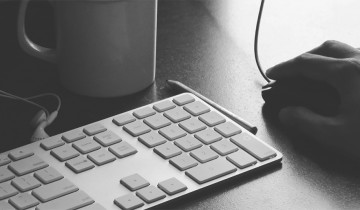A portfolio is a key selling tool to demonstrate your skills as a designer. However, all too often format lets a good portfolio down. Effectively, you need 2 versions: a shorter, digital one and a full portfolio. The former acts as an overview and should be 10-20 slides, showing the key projects you have worked on including some finished photos, FF&E schedules and CAD drawings. Your full portfolio is the one you show in your interview.
We have seen a lot of portfolios over the years and know what design practices like to see. Below we share our top 5 tips for creating your standout portfolio:
1. Perfect Presentation
Your full portfolio should display 3-5 of the key and best projects you have worked on or been heavily involved in. The presentation of your work is critical, it needs to be clearly laid out and labelled. Employers often see several portfolios in a short space of time so need to be able to follow what you are showing them. Don’t clutter each page with lots of images, instead go for less and focus on quality; this is more important than the number of pages. Always put your work in reverse chronological order, regardless of your level. If you have more than 2-3 years experience, edit out your degree work.
2. Tailor it to your Audience
Portfolios should be A3 printed or set up to be viewed on a tablet, possibly a laptop but often it can be difficult to see a computer screen so don’t rely on this as your only option. Think about how many people you are being interviewed by and be prepared to bring a different format. If your portfolio is on an iPad but you are being interviewed 3 people, it will be challenging for everyone to see it at once. A memory stick with your portfolio on is not sufficient and you should never assume that the interviewer will have technology there for you to use. Printed portfolios tend to encourage more of a discussion in an interview so can work better. Remember, you don’t need to share your whole portfolio in one go.
3. Focus on the Design Process
What design practices are looking for in a portfolio is that you can demonstrate the design process from concept to completion. They want to see process work, so include a drawing pack, mood board, sample boards and sketches. Make sure you show which parts of the project you have done yourself. If it’s the sample boards and FF&E schedule, show this. If you can’t show every stage, add in the parts of the process you have worked on, as fully as possible, including sketch plans, concepts, schedules and images. You should also consider adding in a plan of the project to illustrate its scale, but be very clear with the interviewer if you did not create this drawing.
4. Demonstrate Breadth of Skills
A good portfolio should have a drawing pack included showing a range of GAs, plans, elevations, sections, RCPs, lighting and joinery. Add in the most complex drawing you have worked on and only use your best examples. When it comes to schedules, show a section of these, not the whole thing, so that you can explain it and talk it through. And finally, don’t forgot to include your sketchbook.
5. Play to you Strengths
Your portfolio must reflect the work that you do and the skills that you have. If you are great at sketching, include plenty of examples. Think about what you are best at and utilise your portfolio to demonstrate your true competences.
Spend time on your portfolio and refresh it regularly so that you are always presenting your best work.

